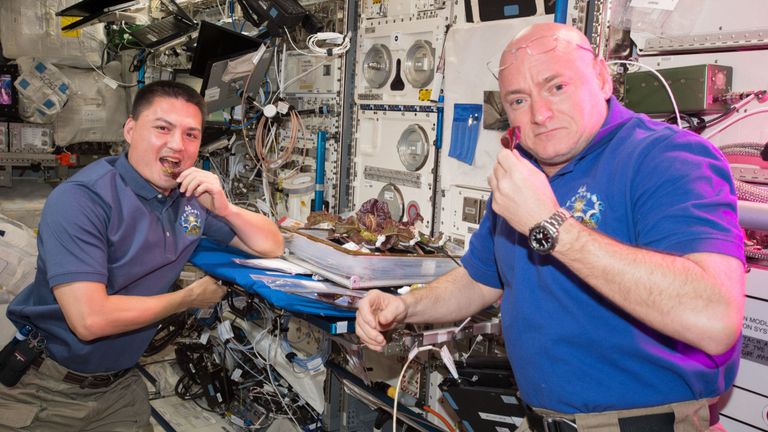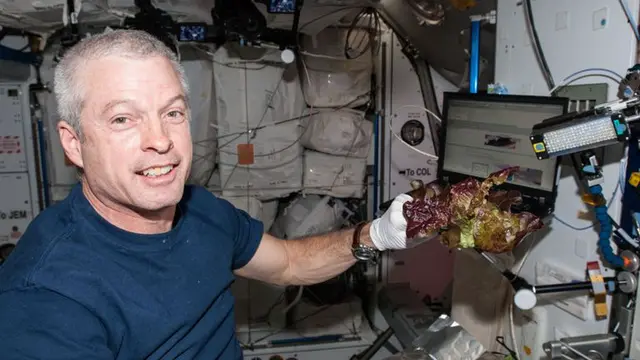Lettuce grown aboard the International Space Station (ISS) is just as nutritious as lettuce grown on Earth, according to NASA astronauts.
In a scientific study published in the journal Frontiers in Plant Science, the US space agency revealed there were little differences in nutrients depending on where the lettuce was grown.
The space lettuce was pretty similar to control samples grown on Earth, but some plants were actually even richer in a number of elements including potassium, sodium and zinc.

Image:Astronauts Scott Kelly and Kjell Lindgren taste the lettuce grown onboard the ISS in August 2014. Credit: NASA
The crops had been grown in sealed units aboard the ISS containing ceramic soil under special red lighting for between 33 and 56 days and were watered by the astronauts by injection through a tube.
After the plants were fully grown the astronauts harvested them. Some were eaten while others were deep-frozen or returned to Earth for analysis.
Higher levels of bacteria were found on the space-grown crops, although that did not include dangerous types such as E.coli or salmonella.
Growing food in space is necessary for long-duration space missions, potentially including NASA's crewed mission to Mars.
Normal pre-packaged meals which astronauts have usually come in space rations which have been sterilised by heating, freeze drying or being irradiated.
These processes are expensive and if the astronauts were able to eat food they were growing themselves then they could potentially survive in space for at a much cheaper cost.
Image:Astronaut Shane Kimbrough in front of the 'Veggie' chamber on the ISS in November 2016. Credit: NASA
"The International Space Station is serving as a test bed for future long-duration missions," said the study's co-author Dr Gioia Massa, a project scientist at the Kennedy Space Center.
"These types of crop growth tests are helping to expand the suite of candidates that can be effectively grown in microgravity.
"Future tests will study other types of leafy crops as well as small fruits like pepper and tomatoes, to help provide supplemental fresh produce for the astronaut diet," she concluded.
 简体中文
简体中文

